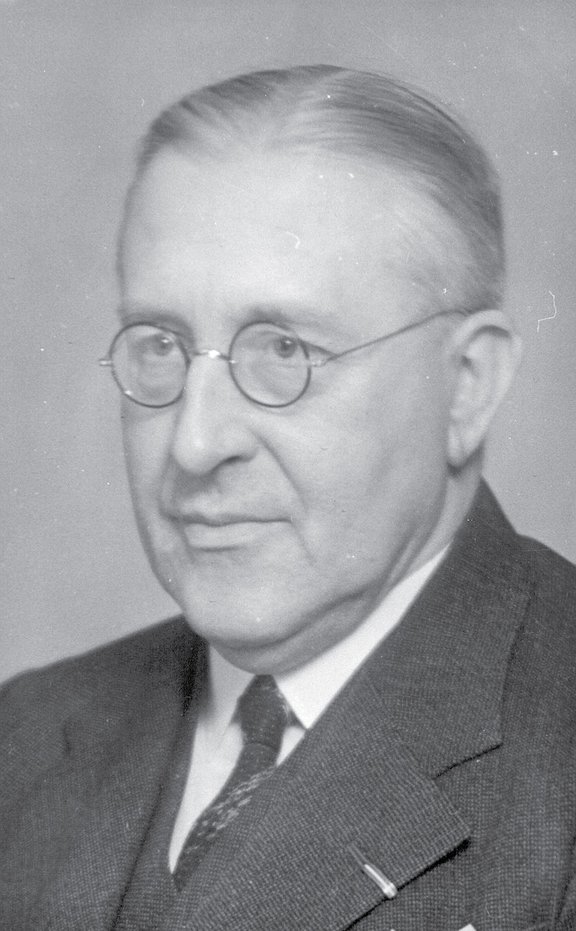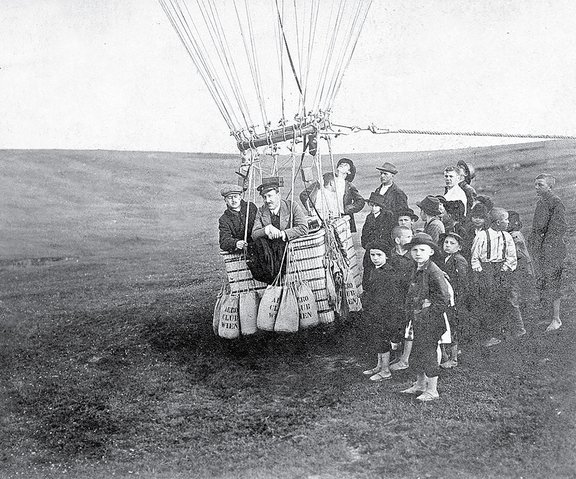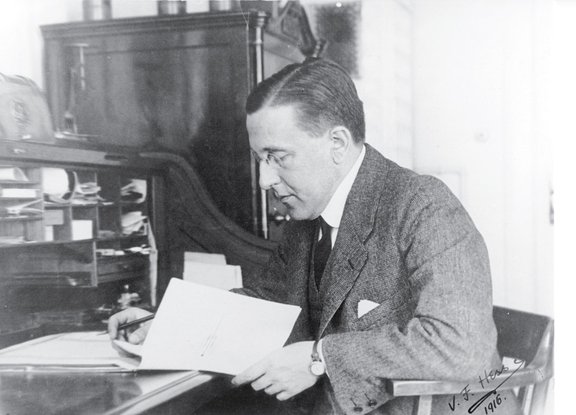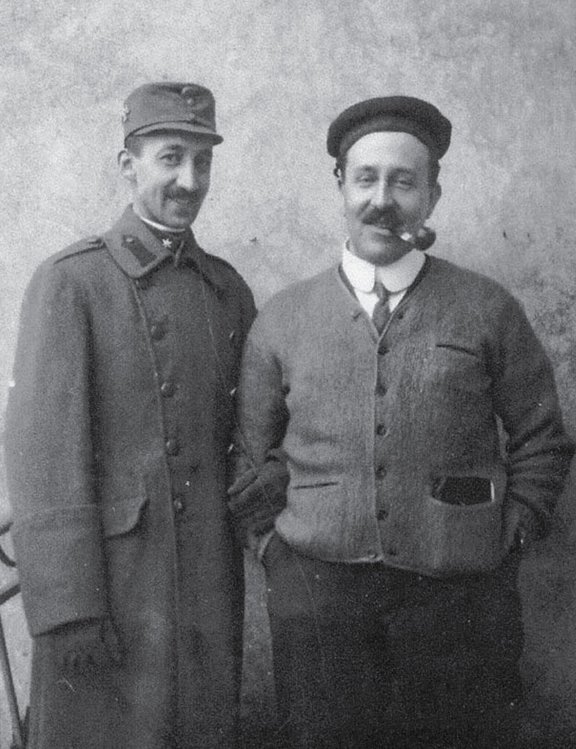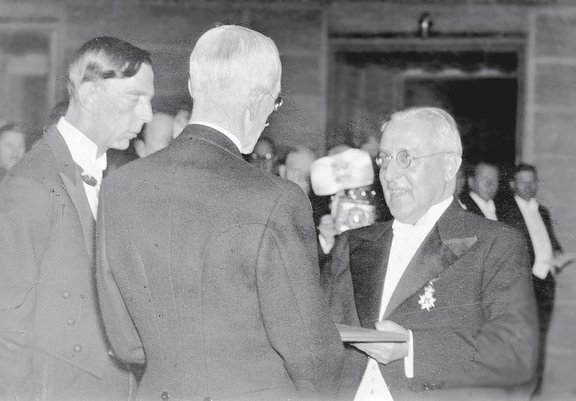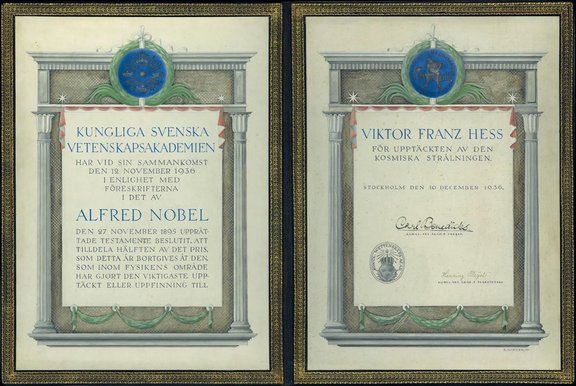Victor Franz Hess: Biography
Victor Franz Hess (1883-1964) discovered cosmic rays in 1912. This launched him on a steep career, which also brought the young physicist to the University of Innsbruck. Here Hess founded the world’s first high-altitude laboratory for the study of cosmic radiation. The power grab by the National Socialists put an abrupt end to his research in Austria, and he had to flee to the USA. After the Second World War, belated tributes to his scientific achievements provided repeated opportunities for trips to his former home. Victor Franz Hess paid a last visit to the research station on Hafelekar in 1958.
The only surviving tape recording of Victor F. Hess's voice probably dates from 1958. Since the surgical removal of a vocal cord in the mid-1930s, Hess has only been able to speak in a hoarse whisper.
Voice recording Victor F. Hess, presumably 1958, Archive of the University of Innsbruck
| Date | Milestone |
|---|---|
| 24.6.1883 | Born the son of a forester at Waldstein Castle near Deutschfeistritz in Styria |
| 1901 | High school graduation with distinction, enrolled at the University of Graz |
| 1906 | Doctorate sub auspiciis Imperatoris in physics |
| 1906–1910 | Assistant professor at the 2nd Physical Institute of Vienna University |
| 1908–1920 | Docent of Medical Physics at the Vienna University of Veterinary Medicine |
| 1910 | Postdoctoral thesis at the 2nd Physical Institute of Vienna University |
| 1910–1920 | Research at the Vienna Institute for Radium Research |
| 1912 | Discovery of cosmic rays in a series of ascents in a balloon |
| 1915 | Voluntary head of the X-ray department of the Swedish Military Hospital in Vienna |
| 1920 | Associate Professor of Experimental Physics at the University of Graz |
| 1921 | Married Bertha Breisky (1868–1955) |
| 1921–1923 | Leave of absence from Graz University and position as chief physicist at the U.S. Radium Corporation in Orange, New Jersey, USA |
| 1923 | Returned to the University of Graz |
| 1931–1937 | Professor of Experimental Physics at the University of Innsbruck |
| 1931 | Foundation of the research station on Hafelekar |
| 1934 | Surgical removal of a vocal cord due to a suspected carcinoma Appointed to the Federal Cultural Council, Science Group, of the Schuschnigg regime |
| 1936 | Nobel Prize in Physics awarded for the discovery of cosmic rays |
| 1937 | Chair of the Institute of Physics at the University of Graz |
| 1938 | Dismissed from the university; emigrated to the USA Professor of Physics at Fordham University, New York |
| 1944 | US citizenship |
| 1951 | Developed methods for the diagnosis of radium poisoning |
| 1955 | Death of his wife Bertha; married Elizabeth M. Hoencke (1905–1973) |
| 1958 | Last visit to Innsbruck |
| 19.12.1964 | Death at the age of 81 in Mount Vernon, New York |
The Discovery of Cosmic Rays
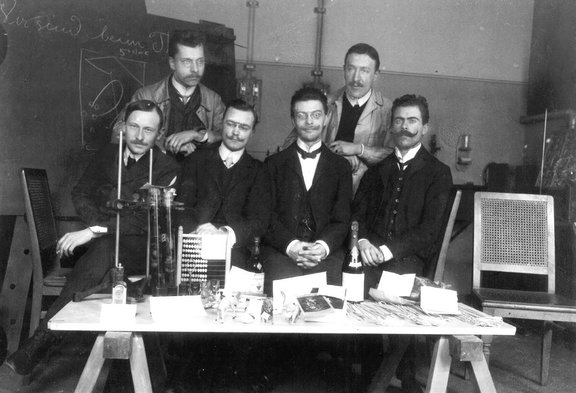
After studying in Graz, Victor F. Hess moves to Vienna, where he starts work as assistant professor at the 2nd Physical Institute in Türkenstrasse in 1906.
Victor F. Hess (right, back) with young physics colleagues: Georg Hofbauer (left, back), and front row (from the left): Josef Nabl, Franz Aigner, Karl Siegl, Norbert Stücker, 18 March 1907, presumably 2nd Physical Institute, Vienna
The Nobel Prize Award
Flight and Exile

On 9 August 1938, Victor F. Hess rides up to Hafelekar for the last time before the outbreak of war. His entry in the visitors’ book testifies to his sense of uncertainty: “Farewell! For how long?”
Like so many other scientists, he has no choice but to go into exile. He manages to flee to Switzerland on 2 October 1938. From there he travels to the USA.
Entry in the visitors’ book by Victor F. Hess, 9 August 1938, Museum of the Institute for Experimental Physics
Visit the historic observatory on the Hafelekar and learn more about the Nobel Prize winner and discoverer of cosmic rays Victor Franz Hess.


